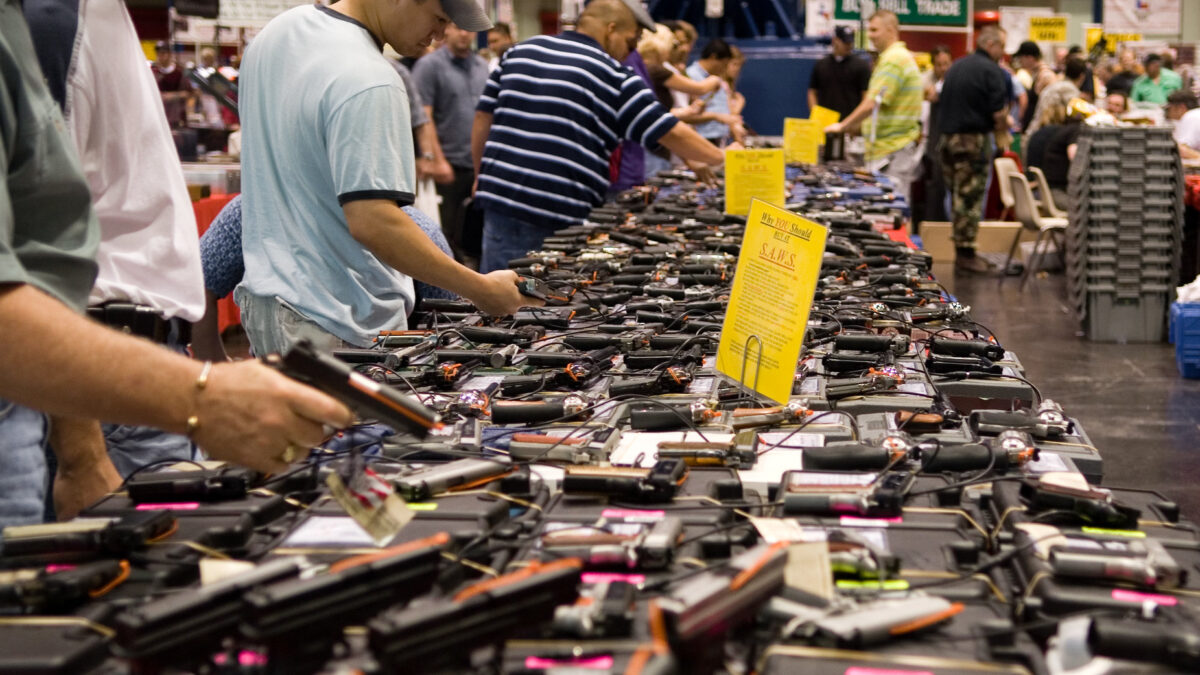
A popular fiction circulating around the gun debate these days contends that “the government” has been “banned” from studying “gun violence.” This prohibition, I’m regularly assured, has led to a dearth of reliable science on firearms, and only when it’s lifted can America start alleviating the “epidemic” of mass shootings.
“Why Can’t the U.S. Treat Gun Violence as a Public-Health Problem?” asks one major publication. “Gun violence research by the government hasn’t been funded in two decades. But that may soon change,” says another. “The CDC can’t fund gun research. What if that changed?” ponders a third.
The most obvious problem with this assertion is that it’s untrue.
In 1996, a few years after the Center for Disease Controls had funded a highly controversial study that has since embedded itself into the “scientific” case for gun control, Arkansas Republican Jay Dickey* added an amendment to a funding bill that dictated “none of the funds made available for injury prevention and control” should be used to “advocate or promote gun control.” That same year, Congress also cut $2.6 million from the CDC’s budget, the amount it spent on gun control efforts. Bill Clinton signed it into law.
Absolutely nothing in the amendment prohibits the CDC from studying “gun violence,” even if this narrowly focused topic tells us little. In response to this inconvenient fact, gun controllers will explain that while there isn’t an outright ban, the Dickey amendment has a “chilling” effect on the study of gun violence.
Does it? Pointing out that “research plummeted after the 1996 ban” could just as easily tell us that most research funded by the CDC had been politically motivated. Because the idea that the CDC, whose spectacular mission creep has taken it from its primary goal of preventing malaria and other dangerous communicable diseases, to spending hundreds of millions of dollars nagging you about how much salt you put on your steaks or how often you do calisthenics, is nervous about the repercussions of engaging in non-partisan research is hard to believe.
Also unlikely is the notion that a $2.6 million cut in funding so horrified the agency that it was rendered powerless to pay for or conduct studies on gun violence. The CDC funding tripled from 1996 to 2010. The CDC’s budget is over six billion dollars today.
And the idea that the CDC was paralyzed through two-years of full Democratic Party control, and then six years under a president who was more antagonistic towards the Second Amendment than any other in history, is difficult to believe, because it’s provably false.
In 2013, President Barack Obama not only signed an Executive Order directing the CDC to research “gun violence,” the administration also provided an additional $10 million to do it. Here is the study on gun violence that was supposedly banned and yet funded by the CDC. You might not have heard about the resulting research, because it contains numerous inconvenient facts about gun ownership that fails to propel the predetermined narrative. Trump’s HHS Secretary Alex Azar is also open to the idea of funding more gun violence research.
It’s not banned. It’s not chilled.
Meanwhile, numerous states and private entities fund peer-reviewed studies and other research on gun violence. I know this because gun control advocates are constantly sending me studies that distort and conflate issues to help them make their arguments. My inbox is bombarded with studies and conferences and “webinars” dissecting gun violence.
The real problem here is two-fold. One, researchers want the CDC involved so they can access government data about American gun owners. Considering the rhetoric coming from Democrats — gun ownership being tantamount to terrorism, and so on — there’s absolutely no reason Republicans should acquiesce to helping gun controllers circumvent the privacy of Americans citizens peacefully practicing their Constitutional rights.
Second, gun control advocates want to lift the ban on politically skewed research because they’re interested in producing politically skewed research. When the American Medical Association declares gun violence a “public health crisis,” it’s not interested in a balance look at the issue. When researchers advocate lifting the restrictions on advocacy at the CDC, they don’t even pretend they not to hold pre-conceived notions about the outcomes.
It’s also worth noting that concerns over the politicization of the CDC were, then as now, well founded. If you read this 1994 New York Times piece, titled “New Tactics Urged in Fight Against Crime,” you’ll find Mark Rosenberg” — then director at the CDC’s National Center for Injury Prevention and Control, which oversaw the “gun violence” research — urging America “to revolutionize the way we look at guns, like what we did with cigarettes … It used to be that smoking was a glamour symbol — cool, sexy, macho. Now it is dirty, deadly — and banned.”
There’s no reason to allow activists — then or now — to use the veneer of state-sanctioned science for their partisan purposes. For example, we now know that Rosenberg and others at the CDC turned out to be wrong about the correlation between guns and crime — a steep drop in gun crimes coincided with the explosions of gun ownership from 1996 to 2014.
The Dickey Amendment might keep the CDC from funding activism. What it doesn’t do is stop the CDC from funding good-faith rigorous research into violence.
*Jay Dickey later changed his position on the amendment. It’s certainly a fact worth noting. Yet, simply because Norma McCorvey changed her mind about abortion doesn’t alter the facts surrounding the debate. Nor does Dickey’s change of heart.









